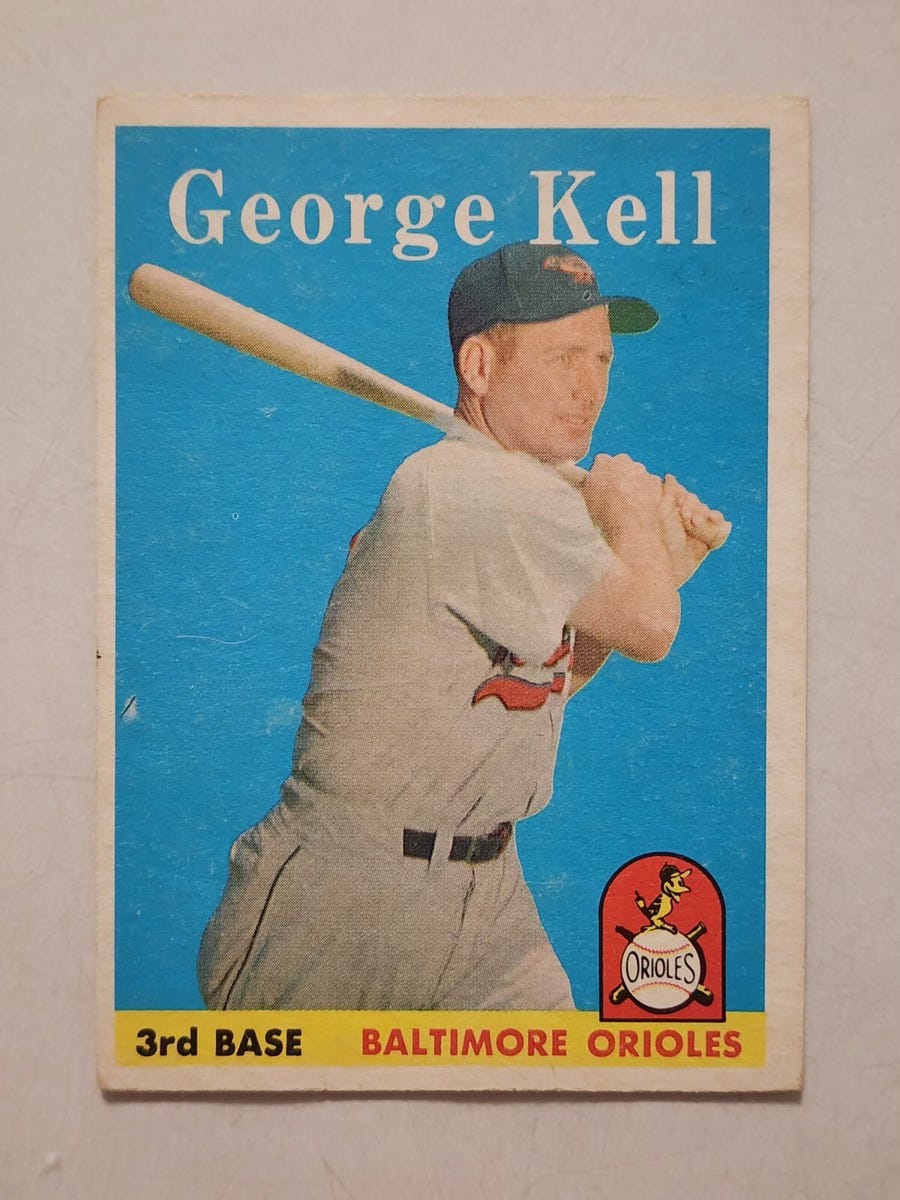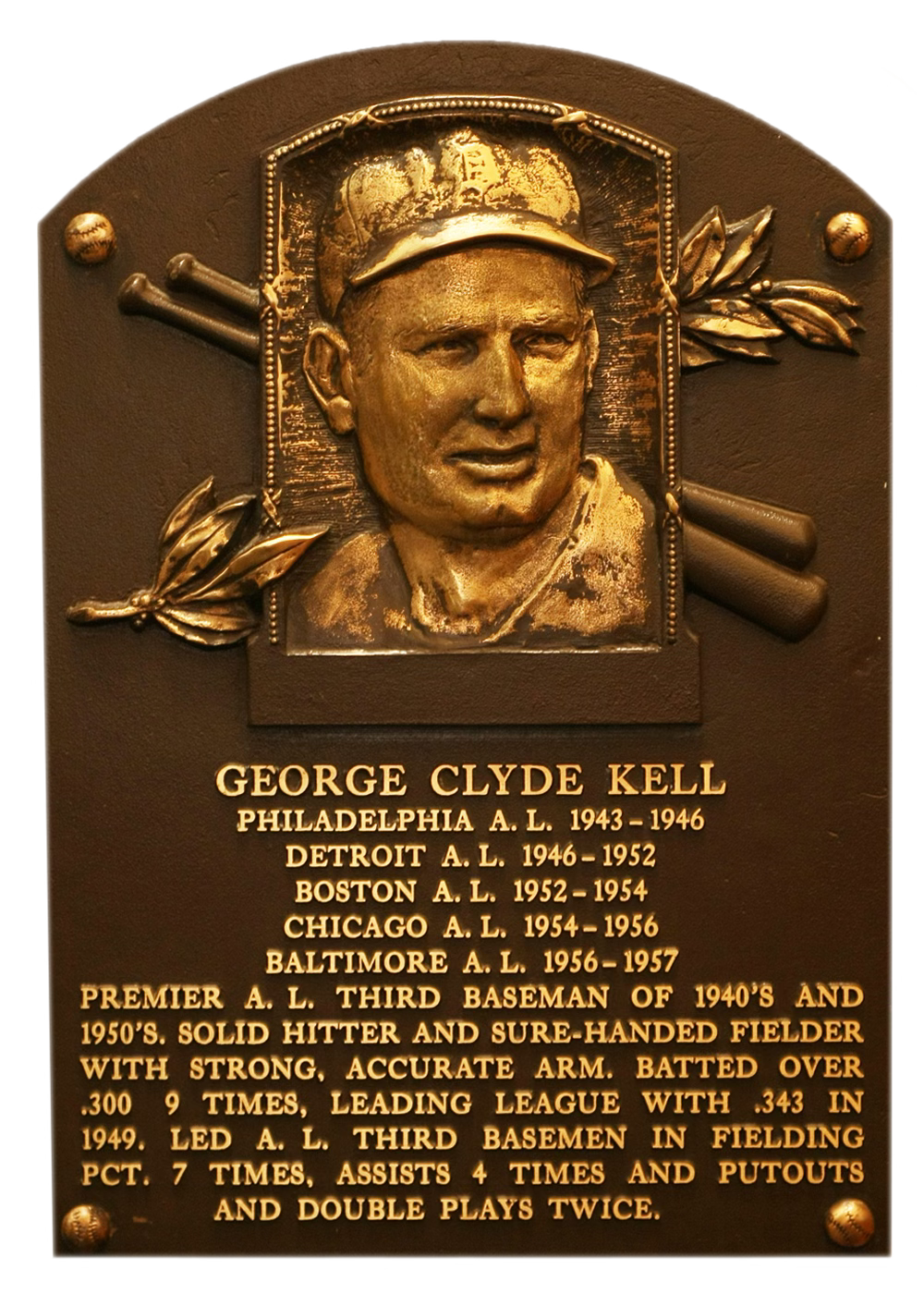The First Oriole Who Played in the All-Star Game Was ...
Their first two All-Star Game selections didn't see the field during the game. Then Paul Richards traded for a future Hall of Fame third baseman from Arkansas who (surprise) wasn't named Robinson.
When Ryan O’Hearn batted in the second inning of the 2025 All-Star Game Tuesday night in Atlanta, he became the latest Oriole to play in the Midsummer Classic.
A long, stellar list of players preceded him, led by franchise cornerstones such as Brooks Robinson and Cal Ripken Jr., but also featuring far-lesser-known one-timers such as Chuck Estrada (1960) and Ty Wigginton (2010.)
Inevitably, given the deep dive into Orioles history ongoing here at the Bird Tapes, I found myself wondering where the list began. If O’Hearn was the latest, who was the first Oriole to play in the All-Star Game?
Turns out it’s kind of a trick question.
In 1954, their first year in Baltimore, the Orioles weren’t long on All-Star-caliber talent; they lost 100 games. But a core principle of the All-Star Game, from its inception in 1933, was that every team would have at least one representative, the idea being to give fans of all teams a connection to the game. The Orioles’ lone All-Star in 1954 was Bob Turley, a 23-year-old pitcher whose 14-15 record that season qualified as a major feat, if not a minor miracle.
Turley was a worthy selection — he would make two more All-Star teams and win a Cy Young award by the end of his career. But he didn’t pitch in the 1954 All-Star Game, and neither did the Orioles’ lone All-Star representative in 1955 — another pitcher, Jim Wilson, a 34-year-old who’d toiled in the majors since the 1940s.
By then, Paul Richards had been hired away from the White Sox as the Orioles’ manager-GM and was busy engineering a dizzying barrage of trades aimed at demolishing the club’s moribund status quo and pointing it toward better days. Turley went to the Yankees in a 17-player deal after the 1954 season. Wilson came from the Braves in exchange for cash early in the 1955 season, made the All-Star team a few months later, and was dispatched to the White Sox in a six-player deal early in the 1956 season.
(Wilson wound up impacting the Orioles far more significantly in a second act with the club a few years later. Richards really liked him and hired him as an area scout on the West Coast in 1959, shortly after Wilson retired from playing. Wilson was the scout who discovered and pursued a tall high school right-hander named …. you guessed it … Jim Palmer.)
In the six-player deal with the White Sox in May of 1956, Richards sent Wilson and another pitcher, Dave Philley, to Chicago in exchange for pitchers Mike Fornieles and Connie Johnson, outfielder Bob Nieman and third baseman George Kell.
Kell, a 33-year-old from Arkansas, was the biggest name in the deal. Near the end of a superb career spent entirely in the American League, he’d played in eight All-Star Games, won a batting title and consistently displayed a first-rate glove. Although he had little power, he’d hit over .300 in most of his seasons with the Athletics, Tigers, Red Sox and White Sox.
Less than two months after he joined the Orioles, he started at third base for the American League in the 1956 All-Star Game at Griffith Stadium in Washington. When he took the field in the top of the first inning, he became the first Oriole to actually play in the All-Star Game. He never came out, going 1-for-4 in the National League’s 7-3 victory.
Kell ended up hitting .261 in 1956, which was 45 points below his career average. He knew his career was almost over.
“After that season, I made up my mind I would play one more year. I really didn’t even feel like doing that, but the Orioles had made quite a commitment to get me. I figured I owed it to them,” Kell said later, according to a Society of American Baseball Research profile.
At the time, Kell thought he knew what he would do next, as he explained when I interviewed him years later for my book on Orioles history.
“Paul told me when he went to Baltimore (in 1955 from the White Sox, where Kell had played for him), ‘I’m going to trade for you and make you manager, and I’m going to move into the front office as GM.’ When he traded for me, I assumed that’s the way it would be. At that time, I was really interested in managing,” Kell recalled.
That scenario never unfolded. “About midseason in ‘57, he told me the (Oriole) owners had told him they wanted him to manage, that they hired him to do that and no change would be made,” Kell recalled. “I said that was OK, I was ready to retire anyway.”
In the end, Kell took a different post-playing path, at least partly because he was seriously beaned twice during the 1957 season, which was his last as a player. While sitting out chunks of the season, he watched games from the Orioles’ radio booth, sitting alongside broadcaster Ernie Harwell. Kell had dabbled in radio work earlier in his playing career. Harwell let him handle the play-by-play duties for several innings, and Kell impressed. He was destined for a career in broadcasting.
By 1960, Kell and Harwell were the Tigers’ radio broadcast team. They became an iconic pairing, working together in Detroit until Kell retired in 1997.
Although he wore the Orioles’ uniform for just 201 of the 1,795 major league games he played in, Kell — like Jim Wilson with his scouting of Palmer — also significantly impacted the club’s long-range fortunes in a positive way. In 1956 and 1957, he mentored a far younger third baseman from Arkansas named Robinson.
“Brooks and I were raised 90 miles apart, same background, same family life, same church, same values,” Kell told me years later. “I didn’t know about him when I came to the Orioles. He was playing in (Double A) San Antonio when I got there. He came up later in ‘56 and opened with us in ‘57. He played third and I played first against left-handers. Against righties, I’d play third. We spent a lot of time together. I think I helped show him how a major leaguer was supposed to live.”
In a wonderful coincidence, Robinson and Kell went into baseball’s Hall of Fame together in 1983, 27 years after Kell became the first of many Orioles to play in the All-Star Game.







Thanks for yet another fascinating story in your collection of Oriole history that keeps growing. In 1949 Kell edged out Ted Williams for the batting average championship preventing Ted for winning another batter's Triple Crown. I think Dave Philley was primarily a pinch hitter with the Orioles.
Oops.. didn’t mean to hit ‘send’ yet. I was going to mention how busy the clubhouse guys must have been during Paul Richard’s’ time with all the coming and going.